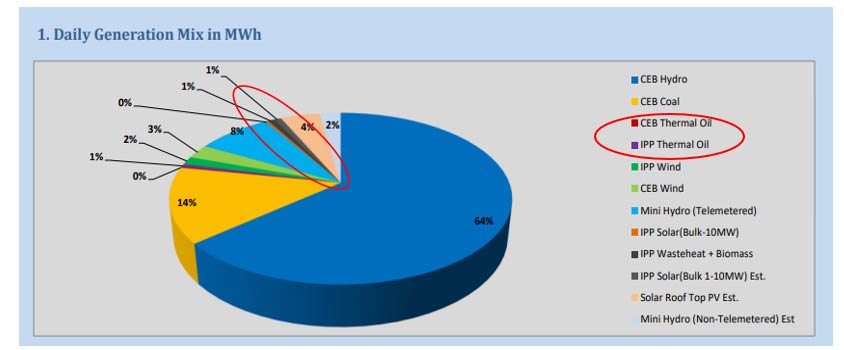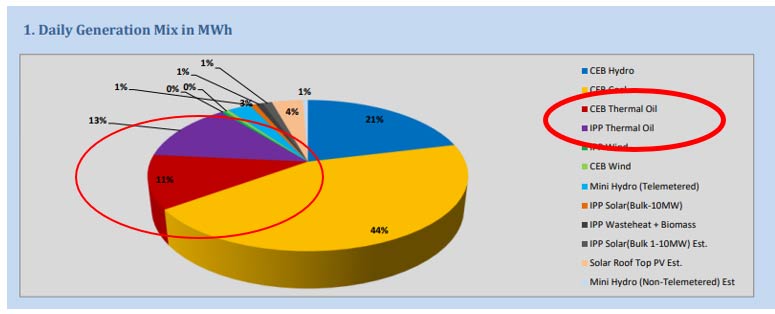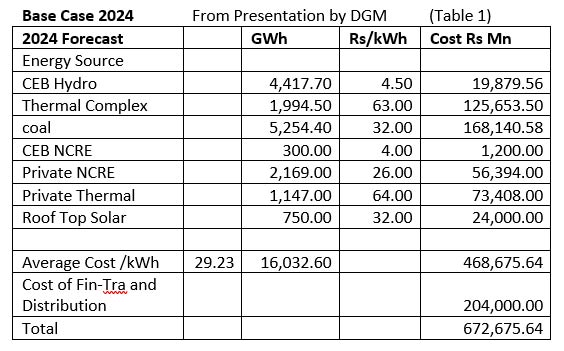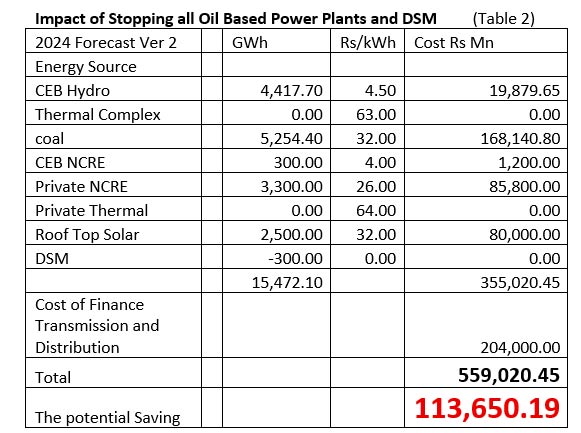Features
Energy is people’s property– Time to claim our share

by Eng Parakrama Jayasinghe
E Mail: parajayasinghe@gmail.com
Are we out of the woods on Consumer Tariff?
If I had made this statement a few years ago, I would have been labeled insane. The ground reality at that time would have clearly supported that view. But much has changed since then. The basic resources available are natural renewable resources such as sunshine, wind, water. Of particular interest are the solar energy technologies, which have now made it possible for electricity consumers to become “Prosumers”.
Exciting future ahead?
The electricity tariff reduction has come as some relief to consumers. However, it was only temporary respite. What was achieved was the removal of the 18% average increase in tariff imposed in October 2023. But the consumers are required to bear two massive tariff increases imposed in August 2022 and February 2023. They would make Sri Lanka’s consumer tariff the highest in the region. The PUCSL has called submissions for the next tariff revision due in June.
The dynamics of consumer tariff calculations
The Ceylon Electricity Board (CEB) claims that it has to be paid an adequate tariff to cover its costs, but it does not admit the fact that it has not striven to keep such costs at economical levels in keeping with its mandate.
The reduction of 22% was achieved only because of last year’s abundant rainfall, which enabled the CEB to do without most expensive oil-based generation. (See graph 1)
The Generation Mix on 1st January 2024- PUCSL Data
On 01 Jan., 2024 the use of oil came down to 2%. It was zero on some days. We should try to maintain that but it has now completely reversed as shown below. The oil-based generation has increased to 24% and Coal to 44%. (See Graph 2)
Generation mix of 9March 2024
With the reduced contribution from hydro resources, the cost of generation is bound to rise to the previous level. The CEB has already asked for 100 MW of emergency power, which will prompt it to seek further increases in tariff, sooner than later. We are back to square one.
Therefore, an alternative pathway is essential. Perhaps, Sri Lanka can find dollars to buy oil and coal only because we are yet to commence repaying some of our externa debt. The government should take urgent measures to address this situation.
Feasible immediate future and short-term measures
The highest tariff in the region has gravely affected the competitiveness of our exports of manufactured goods and is delaying the possible economic recovery. Hundreds of SMEs may not recover at all.
Rains helped improve the finances of the CEB, enabling it to mitigate some of these negative impacts, but care should be exercised to avoid the past mistakes which led to the recent mess. Its overdependence on fossil fuel, oil in particular, is the main reason for trouble in the past.
The generation data for recent months clearly show that it is possible to do without any thermal generation if the slack is taken up by hydro and other renewables. This can be extended to the dry months too, if other measures are in place to cater to the reduced contribution from hydro generation. The impact of this in a practical way as a step by step process is illustrated below using data presented by the CEB. (See Tables 1 and 2)
But I believe that all these steps, stopping all oil based IPPs, followed by two stage reduction of CEB oil-based power generation, can be achieved within 2024, given the dire consequences of none commitment.
And once this is achieved there would be a further possibility of further tariff reduction by January 2025. What is more important is that there will be no need to increase the tariff.
It may be argued that we have to maintain some oil-based plants to cater to the variability of solar and wind power. But battery technologies are now commercial and continue to be coming down in price. They will be a far cheaper and more efficient solution.
The hitherto ignored promotion of the demand side management (DSM), particularly the savings possible with use of LED bulbs and energy efficient motors can add to this saving as well as the need for more centralized power generation.
Who will step to the breach to deliver energy?
This is the challenge I posed at the outset. Let us consumers more correctly “Prosumers” claim our right and accept the challenge. The experience of the past few years has given us the confidence that this is indeed possible. We have to be thankful to the Ministry and the CEB for providing a viable tariff for the rooftop solar PV and making several important concessions on the permitted scope to enable the “Prosumers” to raise their interest and scope of engagement to take up this challenge with confidence.
The current 825 MW of roof top solar contributing 1200 GWh (about 6%) of energy annually is evidence enough. There is a need for national policies and the country’s needs should be recognised by the CEB and LECO staff at the field level and they have to be much more committed and co-operative than at present to assist in this nationally critical endeavour.
There is much discussions going on regarding large solar and wind projects, some of which are given to foreigners on a platter with scant regard for the prevailing laws and regulations. But none of these will make a contribution towards resolving the immediate crisis, as they will not deliver any energy for several years more; they will only block Sri Lankan developers’ access to the grid.
However, the immediate potential and challenge is for highly accelerated development of the rooftop solar PV sector, which currently has several positive drivers to attract investment by a large spectrum of “Prosumers” as noted below:
Well-established and tested regulations under the Surya Bala Sangraamaya Much-widened scope of capacities for investment Current reduced prices of systems supported by appreciated rupee
Large number of competent local EPC Contractors Interest evinced by even domestic sector consumers driven by the significantly high electricity bills Lowered loan interest and increasing engagement of local banking sector Attractive business case possible under the Net Accounting system even for medium level domestic consumers.
The hope for the resumption of the ADB loan scheme
(The author will be happy to share the financial analysis on the different modes of engagement possible)
The estimated contribution needed for elimination of use of oil-based generation which is estimated to provide 3440 GWH for the year 2024 are: (See Table 3)
Given the demonstrated progress none of these are impossible targets, and are primarily driven by local private investments, which, while being of value to the investors themselves, would also yield immeasurable benefits to the electricity Sector and the lower end consumers, by lowering the average cost of generation. (See graph 3)
The projected acceleration from 2024 is eminently feasible given the correct emphasis and urgency.
The important message I would like to convey is that it is time we, the true owners of our energy resources, commenced staking our claim which is demonstrably feasible. We will not only be protecting our own interest and wellbeing but also be helping the country immensely. The double benefit of increased “Prosumer” contribution is the reduction of demand on the grid and the need for the projected level of additional generation capacity even from RE sources.
Role of demand side management.
There is absolutely no excuse for the CEB not to initiate a very aggressive DSM programme starting with the replacement of all remaining incandescent bulbs and CFL bulbs with LED bulbs.
There are many other avenues of DSM which require urgent action to implement.
How can govt. and the energy authorities help?
They can do so by refraining from causing obstructions if they are not willing or able to facilitate and accelerate this change in addition to:
Doing away with disincentives like the recent VAT on import of solar panels
Making it the mandatory for the CEB and LECO to ensure reaching the 70% RE target by 2030. This change must have year-by-year milestones and rooftop solar power is the low hanging fruit. Since this can be developed only by the “Prosumers” and not by the CEB nor LECO, it is hoped that they will pass this mandate and responsibility on to the lowest depot level staff, who are best placed to provide the favourable ecosystem to encourage the development Ensuring that banks allocate a reasonable portfolio of credit for the sector without imposing impractical and unfair demands on collateral Maintaining the current favourable fixed feed in tariff (Nov 2022 Gazette) at least until 2026.
Accelerating the process to obtain the next ADB concessional loan facility. While the government keeps stressing the need to increase export income, we can help reduce the outflow of forex.
Features
Sri Lanka’s Foreign Policy amid Geopolitical Transformations: 1990-2024 – Part I
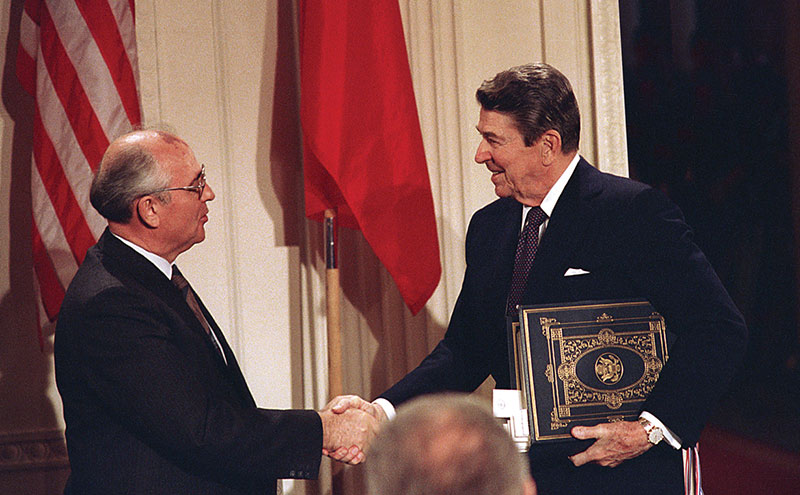
Sri Lanka’s survival and independence have historically depended on accurately identifying foreign policy priorities, selecting viable strategies as a small island state, and advancing them with prudence. This requires an objective assessment of the shifting geopolitical landscape through a distinctly Sri Lankan strategic lens. Consequently, foreign policy has been central to Sri Lanka’s statecraft, warranted by its pivotal location in the Indian Ocean—adjacent to South Asia yet separated by a narrow stretch of water.
Amid pivotal geopolitical transformations in motion across South Asia, in the Indian Ocean, and beyond, the formulation and implementation of Sri Lanka’s foreign policy has never been more critical to its national security. Despite the pressing need for a cohesive policy framework, Sri Lanka’s foreign policy, over the past few decades, has struggled to effectively respond to the challenges posed by shifting geopolitical dynamics. This article examines the evolution of Sri Lanka’s foreign policy and its inconsistencies amid shifting geopolitical dynamics since the end of the Cold War.
First
, the article examines geopolitical shifts in three key spaces—South Asia, the Indian Ocean, and the global arena—since the end of the Cold War, from Sri Lanka’s strategic perspective. Building on this, second, it analyses Sri Lanka’s foreign policy responses, emphasising its role as a key instrument of statecraft. Third, it explores the link between Sri Lanka’s foreign policy dilemmas during this period and the ongoing crisis of the post-colonial state. Finally, the article concludes that while geopolitical constraints persist, Sri Lanka’s ability to adopt a more proactive foreign policy depends on internal political and economic reforms that strengthen democracy and inclusivity.
Shifting South Asian Strategic Dynamics
Geopolitical concerns in South Asia—Sri Lanka’s immediate sphere—take precedence, as the country is inherently tied to the Indo-centric South Asian socio-cultural milieu. Sri Lanka’s foreign policy has long faced challenges in navigating its relationship with India, conditioned by a perceived disparity in power capabilities between the two countries. This dynamic has made the ‘India factor’ a persistent consideration in Sri Lanka’s strategic thinking. As Ivor Jennings observed in 1951, ‘India thus appears as a friendly but potentially dangerous neighbour, to whom one must be polite but a little distant’ (Jennings, 1951, 113).The importance of managing the ‘India Factor’ in Sri Lankan foreign policy has grown further with India’s advancements in military strength, economic development, and the knowledge industry, positioning it as a rising global great power on Sri Lanka’s doorstep.
India’s Strategic Rise
Over the past three decades, South Asia’s geopolitical landscape has undergone a profound transformation, driven by India’s strategic rise as a global great power. Barry Buzan (2002:2) foresees this shift within the South Asian regional system as a transition from asymmetric bipolarity to India-centric unipolarity. India’s continuous military advancements have elevated it to the fourth position in the Global Firepower (GFP) index, highlighting its formidable conventional war-making capabilities across land, sea, and air (Global Firepower, 2024). It currently lays claims to being the world’s third-largest military, the fourth-largest Air Force, and the fifth-largest Navy.
India consistently ranks among the fastest-growing major economies, often surpassing the global average. According to Forbes India, India is projected to be the world’s fifth-largest economy in 2025, with a real GDP growth rate of 6.5% (Forbes, January 10, 2025). India’s strategic ascendance is increasingly driven by its advancements in the knowledge industry. The country is actively embracing the Fourth Industrial Revolution (4IR) and emerging as the Digital Public Infrastructure (DPI) hub of South Asia. However, India’s rise has a paradoxical impact on its neighbours. On one hand, it offers them an opportunity to integrate into a rapidly expanding economic engine. On the other, it heightens concerns over India’s dominance, leaving them feeling increasingly overshadowed by the regional giant.
Despite significant geo-strategic transformations, the longstanding antagonism and strategic rivalry between India and Pakistan have persisted into the new millennium, continuing to shape South Asia’s security landscape. Born in 1947 amid mutual hostility, the two countries remained locked in a multi-dimensional conflict encompassing territorial disputes, power equilibrium, threat perceptions, accusations of interference in each other’s domestic affairs, and divergent foreign policy approaches. The acquisition of nuclear weapons by both countries in 1998 added a new dimension to their rivalry.
The SAARC process has been a notable casualty of the enduring Indo-Pakistani rivalry. Since India’s boycott of the Islamabad Summit in response to the 2016 Uri attack in Kashmir, the SAARC process has remained in limbo. Countries like Sri Lanka, which seek to maintain equally amicable relations with both India and Pakistan, often find themselves in awkward positions due to the ongoing rivalry between them. One of the key challenges for Sri Lanka’s foreign policy is maintaining strong relations with Pakistan while ensuring its ties with India remain unaffected. India now actively promotes regional cooperation bodies in South Asia, excluding Pakistan, favouring broader frameworks such as BIMSTEC. While Sri Lanka can benefit greatly from engaging with these regional initiatives, it must carefully navigate its involvement to avoid inadvertently aligning with India’s efforts to contain Pakistan. Maintaining this balance will require sharp diplomatic acumen.
India’s expansive naval strategy, especially its development of onshore naval infrastructure, has positioned Sri Lanka within its maritime sphere of influence. As part of the Maritime Infrastructure Perspective Plan (MIPP) launched in 2015 to enhance operational readiness and surveillance capabilities, India is developing an alternative nuclear submarine base for the Eastern Command under Project Varsha (Deccan Chronicle, 22.11.2016). This base is located in Rambilli village, 50 km southwest of Visakhapatnam and 1,200 km from Colombo (Chang, 2024). Additionally, INS Dega, the naval air base at Visakhapatnam, is being expanded to accommodate Vikrant’s MiG-29K and Tejas fighter aircraft.
Another key strategic development in India’s ascent that warrants serious attention in Sri Lanka’s foreign policy formulation is India’s progress in missile delivery systems (ICBMs and SLBMs) and nuclear-powered submarines. In 1998, India made it clear that its future nuclear deterrence would be based on a nuclear triad consisting of land-based Intercontinental Ballistic Missiles (ICBMs), submarine-launched ballistic missiles (SLBMs), and strategic bombers (Rehman, 2015). Since then, India has steadily advanced in this direction. The expansion of India’s missile delivery systems, including ICBMs and SLBMs, serves as a reminder that Sri Lanka exists under the strategic shadow of a major global power.
The development of India’s nuclear-powered ballistic missile submarines (SSBNs) accelerated after 2016. The first in this class, INS Arihant (S2), was commissioned in August 2016, followed by the launch of INS Arighat in November 2021. Designed for strategic deterrence, INS Arighat is equipped to carry the Sagarika K-4 submarine-launched ballistic missiles (SLBMs), with a range of 3,500 kilometers, as well as the K-5, a long-range SLBM capable of reaching 5,000 kilometers. The submarine is based at INS Varsha (Deb, 2021).
India has significantly advanced its missile delivery systems, improving both their range and precision. In 2021, it successfully tested the Agni-5, a nuclear-capable intercontinental ballistic missile with a range of 5,000 kilometers. On March 11, 2024, India joined the ranks of global powers possessing Multiple Independently Targetable Re-entry Vehicle (MIRV) technology (The Hindu, January 4, 2022). These advancements elevate the Bay of Bengal as a pivotal arena in the naval competition between India and China, carrying profound political and strategic implications for Sri Lanka, which seeks to maintain equally friendly relations with both countries.
Further, India’s remarkable strides in space research have cemented its status as a global power. A defining moment in this journey was the historic lunar landing on 23 August 2023, when Chandrayaan-3 successfully deployed two robotic marvels: the Vikram lander and its companion rover, Pragyan. They made a graceful touchdown in the Moon’s southern polar region, making India the fourth nation to achieve a successful lunar landing. This milestone has further reinforced India’s position as an emerging great power, enhancing its credentials to assert itself more confidently in South Asian, Indian Ocean, and global power dynamics.
India envisions a stable and secure South Asia as essential to its emergence as a great power in the Indian Ocean and global strategic arenas. However, it does not consider Pakistan to be a part of this stability that it seeks. Accordingly, when India launched the ‘Neighbourhood First Policy’ in 2008 to strengthen regional ties, Pakistan was excluded. India’s ‘Neighbourhood First Policy’ gained renewed momentum after 2015 under Prime Minister Narendra Modi. His approach to South Asia is embedded in a broader narrative emphasising the deep-rooted cultural, economic, and social exchanges between India and other South Asian countries over centuries. India’s promotion of heritage tourism, particularly the ‘Ramayana Trail’ in Sri Lanka, should be viewed through this strategic lens as part of its broader strategic narrative.
Evolving Indian Ocean Geo-political Dynamics
The Indian Ocean constitutes the next geopolitical frame for Sri Lanka’s foreign policy. The Indian Ocean is a huge bay bordered by the Afro-Asian landmass and Australia on three sides and the South Asian peninsula extends into the Indian Ocean basin centrally. Situated at the southern tip of South Asia, Sri Lanka extends strategically into the heart of the Indian Ocean, shaping its geopolitical significance and strategic imperatives for maintaining sovereignty. Historically, Sri Lanka has often been caught in the power struggles of extra-regional actors in the Indian Ocean, repeatedly at the expense of its independence.
Sri Lanka’s leadership at the time of independence was acutely aware of the strategic significance of the Indian Ocean for the nation’s survival. The first Prime Minister D.S. Senanayake, who was also the Minister of Defence and External Affair, stated in Parliament that: “We are in a dangerous position, because we are on one of the strategic highways of the world. The country that captures Ceylon would dominate the Indian Ocean. Nor is it only a question of protecting ourselves against invasion and air attack. If we have no imports for three months, we would starve, and we have therefore to protect our sea and air communications” (Hansard’s Parliamentary Debates, House of Representative. Vol. I, 1 December 1947, c. 444)
As naval competition between superpowers during the Cold War extended to the Indian Ocean, following the British naval withdrawal in the late 1960s, Sri Lanka, under Prime Minister Sirimavo Bandaranaike, played a key diplomatic role in keeping the region free from extra-regional naval rivalry by mobilising the countries that were members of the Non-Aligned Movement (NAM). In 1971, Sri Lanka sponsored a proposal at the UN General Assembly to establish the Indian Ocean as a Peace Zone (IOPZ). While the initiative initially gained traction, it stalled at the committee stage and ultimately lost momentum.
The maritime security architecture of the Indian Ocean entered a new phase after the end of the Cold War. The United States became the single superpower in the Indian Ocean with an ocean-wide naval presence bolstered by the fully fledged Diego Garcia base. Correspondingly, the regional strategic linkages that evolved in the context of the Cold War were eventually dismantled, giving way to new strategic relationships. Additionally, three key developments with profound implications for Sri Lanka should be noted: India’s projection of political and naval power into the deeper Indian Ocean, China’s rapid economic and military rise in the region, and the entry of other extra-regional powers into Indian Ocean politics. Although Sri Lanka adopted a broader strategic perspective and a more proactive foreign policy in the 1970s, its approach to geopolitical developments in the Indian Ocean in the post-Cold War era became increasingly shaped by domestic challenges—particularly countering the LTTE threat and addressing post-war exigencies.
India’s Expanding Naval Diplomatic Role in the Indian Ocean
Parallel to its strategic rise, India has intensified its engagement in the broader strategic landscape of the Indian Ocean with renewed vigor. This expansion extends beyond its traditional focus on the South Asian strategic theatre, reflecting a more assertive and multidimensional approach to regional security, economic connectivity, and maritime diplomacy. India’s active participation in multilateral security frameworks, infrastructure investments in critical maritime hubs and strategic alignments with major global powers signify its role in the changing naval security architecture of the Indian Ocean. India’s shifting strategic posture in the Indian Ocean is reflected in the 2015 strategy document Ensuring Secure Seas: Indian Maritime Security Strategy. It broadens the definition of India’s maritime neighbors beyond those sharing maritime boundaries to include all nations within the Indian Ocean region (Ensuring Secure Seas, p. 23).
In 2015, Indian Prime Minister Narendra Modi launched his signature Indian Ocean diplomacy initiative, Security and Growth for All in the Region (SAGAR) to foster trust and transparency, uphold international maritime norms, respect mutual interests, resolve disputes peacefully, and enhance maritime cooperation. Strategic engagement with the littoral states in the Indian Ocean region, especially Sri Lanka, the Maldives, Seychelles, and Mauritius and Madagascar has emerged as a key component of India’s Indian Ocean naval diplomacy.
The Seychelles archipelago, located approximately 600 miles east of the Diego Garcia base, holds particular significance in India’s maritime strategy. During Prime Minister Narendra Modi’s official visit to Seychelles in March 2015, India and Seychelles signed four agreements. A key strategic outcome of the visit was Seychelles’ agreement to lease Assumption Island, one of its 115 islands, to India—a move that reinforced Seychelles’ alignment with India’s broader naval diplomacy in the Indian Ocean
Similarly, Mauritius holds a central position in India’s naval diplomacy in the Indian Ocean. During Prime Minister Modi’s visit to Mauritius in March 2015, India signed a Memorandum of Understanding with Mauritius to establish a new base on North Agalega Island, a 12-kilometer-long and 1.5-kilometer-wide Island. The base is crucial for air and surface maritime patrols in the southwest Indian Ocean. It will also serve as an intelligence outpost. In September 2016, defense and security cooperation between India and Mauritius deepened alongside the signing of the ‘Comprehensive Economic Cooperation Partnership Agreement’ (CECPA).
India’s expanding strategic interests across the Indian Ocean are reflected in its growing economic, educational, and defense collaborations with Madagascar. In 2007, India established its first overseas listening post in northern Madagascar to monitor shipping activities and intercept marine communications in the Indian Ocean. This initiative provided India with a naval foothold near South Africa and key sea-lanes in the southwestern Indian Ocean. The significance of India’s defense ties with Madagascar is further highlighted by Madagascar’s participation in China’s Belt and Road Initiative (BRI). As a crucial hub along the Maritime Silk Road connecting Africa, Madagascar’s strategic importance is underscored in the broader geopolitical landscape.
Another element of India’s expanding naval diplomacy in the Indian Ocean is its participation in both unilateral and multilateral anti-piracy operations. India’s commitment to regional security was reinforced in 2008 when it established a ‘Strategic Partnership’ with Oman, securing berthing and replenishment facilities for its navy, along with a strategically significant listening post in the Western Indian Ocean. India’s naval presence in the Arabian Gulf gains additional significance amid reports of a new Chinese naval base in Djibouti and recent submarine deployments. Successful anti-piracy missions in the western Indian Ocean underscore India’s growing influence in the region’s evolving naval security architecture.
India increasingly views its vast Diaspora as a soft power tool to bolster its status as an Indian Ocean power. In June 2014, it launched the Mausam project to reinforce its cultural ties across the region, showcasing its heritage, traditions, and contributions to global arts, literature, cinema, yoga, and cuisine. This initiative complements India’s expanding naval diplomacy and strategic presence in the Indian Ocean. Over the years, it has established listening facilities, airfields, and port infrastructure in key locations such as northern Madagascar, Agaléga Island (Mauritius), and Assumption Island (Seychelles). This has led India Today to ask: “Could this mark the emergence of an Indian ‘String of Flowers’ to counter China’s ‘String of Pearls’?” (The be continued)
by Gamini Keerawella
Features
Greener Pastures, Mental Health and Deception in Marriage:
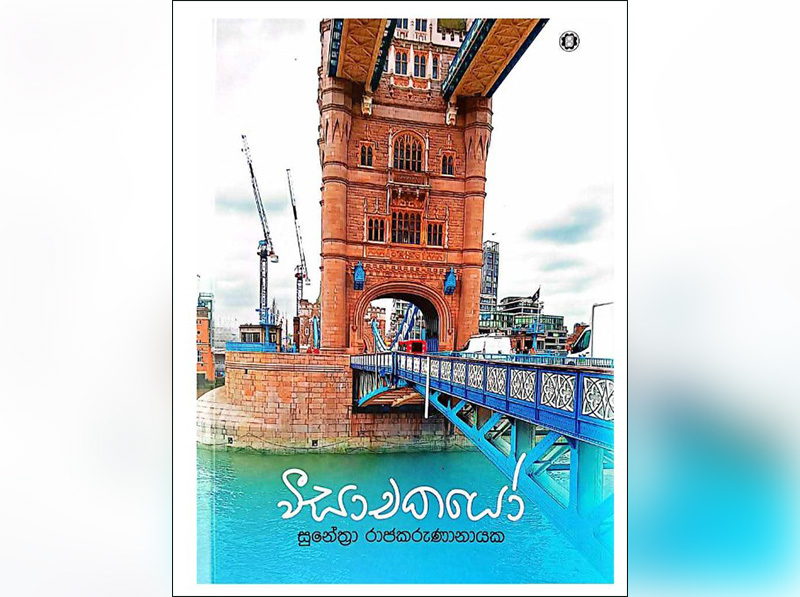
Exploring Sunethra Rajakarunanayake’s Visachakayo
Sunethra Rajakarunanayake’s Sinhala novel Visachakayo (published in 2023) is a thriller in its own sense due to its daring exploration of social themes that modern Sinhala writers fail to touch. To me, the novel is a mosaic that explores pressing issues that middle-class Sri Lankans go through in the 21st Century. The narrative is seen from the perspective of Akshara, a Tamil girl whom the reader first meets in an infamous ‘Visa Queue’ to get her passport to go to England.
Akshara lives with her grandmother ‘Ammamma’ and her aunt ‘Periyamma’ (the younger sister of her mother). Both Ammamma and Periyamma look after her in the absence of her mother, Chinthamani who passed away a long time ago. Akshara’s father lives in Jaffna, with the kids of the second marriage. Later, we are told that Akshara’s father had to marry the second wife due to the loss of his wife’s first husband, who was an LTTE cadre. The second marriage of men seems to be a common theme in the novel due to their commitments to the family as an act of duty and honour.
The most iconic character in the novel is Preethiraj, ‘the man with a big heart’ who functions as a father figure to the other characters in the novel. It is through Preethiraj’s memory that the reader becomes aware of sociological themes in the novel: displacement and immigration, the institution of marriage and mental health issues. Preethiraj (fondly known as Preethi) is the son of Pushpawathi, the second wife of Akshara’s grandfather. Preethi goes to Royal College, but he has to relocate to Jaffna in 1958. Preethi endures social injustice in both public and private spheres. His studious sister, a medical student, labels him as a ‘lunatic’, while his mother condemns him as the ‘odd one’.
The novel intersects between the three themes: immigration and displacement, mental health issues and the institution of marriage. Almost all the characters have to go through displacement, suffer from intricacies of love laws and marriage rules like in The God of Small Things by Arundathi Roy. The writer offers a nuanced analysis of these three themes. For example, take mental health issues. The novel portrays a spectrum of mental health issues, such as schizophrenia, psychosis, Othello Syndrome, depression, autism and even malingering. At times, the representation of such ailments is extremely sarcastic:
“Hm… Canadian citizenship is an easy solution to secure those opportunities. However, unless I am asked to intervene, I will not meddle with their affairs. The son of one of my friends was introduced to a pretty girl. They liked her, not because of her money, but because of her looks and her ability to play the piano. But later, they discovered she has schizophrenia. Now their son follows whatever she says to save the marriage. My friend says she has lost her son” (p.20).
“Those opportunities” refer to material wealth including money and property in Colombo. Here, Rajakarunanayake does not fail to capture the extreme materialism and consumerism. However, in general, her representation of human follies is extremely humane.
The title ‘Visachakayo’ is another interesting coinage that reflects the plight of Sri Lankans who migrate to the ‘global north’ in search of greener pastures. Akshara’s friend, Subhani, who has migrated to England, explains that the term ‘Visachaya’ captures the in-between status of immigrants who are waiting for PR in a foreign country. Subhani mockingly says that they are equal to beggars who beg for visas. Subhani’s coinage and other accounts of Sri Lankan immigrants in England, the novel shows how difficult it is for an immigrant from the ‘global south’ to fight for a living in a country like England where immigrants come to resolve their financial struggles back home.
The novel is an eye-opener in many ways. First, it is an attempt to bridge the gap caused by the Sinhala-Tamil ethnic strife. It is also a cultural mosaic that captures both the joys and sorrows of Sinhala, Tamil and Burgher families in Sri Lanka. The novel also delves into mental health issues, categorically tied to marriage, a daring task even for a seasoned writer. However, Rajakarunanayake’s writing style compels the reader to adopt a more humane and empathetic approach towards individuals grappling with mental health challenges at various stages of their lives. The linguistic technique of using ‘ne’ tag at the end of sentences creates a conversational tone, making the narrative as if it is a conversation between a therapist and a patient. Her writing style also resembles that of Sri Lankan and Indian diasporic writers, a style that is used when writing about the motherland in exile, of which food becomes a critical trope in the narrative that unites the characters who live in exile.
Rajakarunanayake has done a commendable job in the representation of social issues, making this novel a must-read for anyone who is interested in researching social dynamics of contemporary Sri Lanka. It soon needs to be translated into English which will offer a unique experience to Sri Lankan English and international readers. A good book is something that affects the reader. Visachakayo has this quality, and it makes the reader revisit the past, reflect on the present and anticipate the future with hope for humanity just as Preethi does regardless of hardships he endured in the theatre of life.
By C. M. Arsakulasuriya
Features
A strategy for Mahaweli authority to meet future challenges amidst moves to close it down
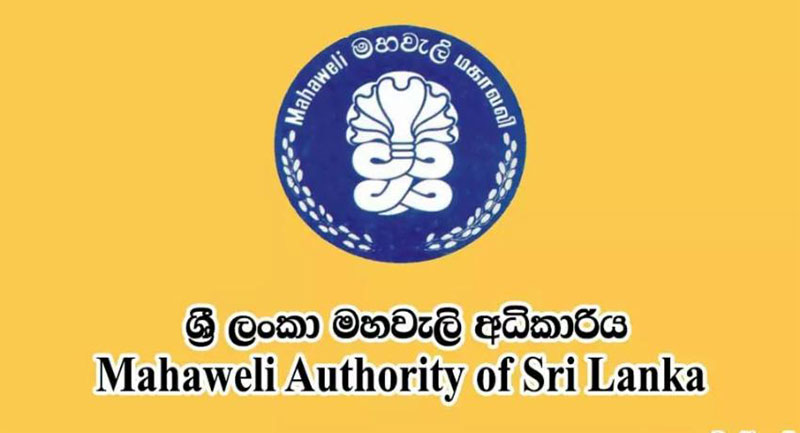
The potential available in lands under Mahaweli Project, which cover about one third of farming areas of the Dry Zone, could easily help the country become self-sufficient in healthy foods, provided it is managed properly. However, at present, the main focus of the Mahaweli Authority of Sri Lanka (MASL) is mainly on Operation & Maintenance of Canal network feeding the farms. Main purpose of the Mahaweli Restructuring & Rehabilitation Project (MRRP) funded by the World Bank in 2000 was to diversify that objective to cover enhancement of agriculture aspects also. System H Irrigation Systems covering about 20,000 Hectares commanded under Kalawewa Tank located in the Anuradhapura District was used as a pilot area to initiate this effort. However, only the Canal Rehabilitation component of the MRRP was attended because of the government policy at that time. Restructuring component is still awaiting to be completed. Only, a strategy called Water Quota was introduced under the MRRP to initiate the restructuring component. However, the management restructuring required addressing the agriculture component expected under MRRP is still not attended.
Propose Strategy
Total length of the canal network which needs seasonal maintenance is about 1,000 Km in a typical large-scale irrigation project such as Kalawewa. Main role of the Resident Project Managers (RPM) appointed to manage such projects should be to enhance the food production jointly with the Farmer Organizations. Therefore, the abbreviation used for RPM should be redefined as Resident Production Manager. The role of a Production Manager is not limited to maintenance of canal networks as adapted presently. In the current production phase, Irrigation projects should be perceived as a Food Producing “Factory” – where water is the main raw material. Farmers as the owners of the factory, play the role of the labour force of the factory. The Production Manager’s focus should be to maximize food production, deviating from Rice Only Mode, to cater the market needs earning profits for the farmers who are the owners of the “factory”. Canal systems within the project area which need regular maintenance are just “Belts” conveying raw materials (water) in a Typical Factory.
Required Management Shift
In order to implement the above management concept, there is a need for a paradigm shift in managing large scale irrigation projects. In the new approach, the main purpose of managing irrigation systems is to deliver water to the farm gate at the right time in the right quantity. It is a big challenge to operate a canal network about 1000 KM long feeding about 20,000 Hectare in a typical Irrigation System such as Kalawewa.
It is also very pathetic to observe that main clients of irrigation projects (farmers providing labor force) are now dying of various diseases caused by indiscriminate use of agrochemicals. Therefore, there is a need to minimize the damages caused to the ecosystems where these food production factories are located. Therefore, the management objectives should also be focused on producing multiple types of organically grown crops, profitably without polluting the soil and groundwater aquifers causing diseases like Kidney Failures.
Proposed Management Structure
Existing management staff should either be trained or new recruitments having Production Engineering background, should be made. Water should be perceived as the most limited input, which needs to be managed profitably jointly with the farming community. Each Production Manager could be allocated a Fixed Volume of water annually, and their performance could be measured in terms of $s earned for the country per Unit Volume of water, while economically upgrading a healthy lifestyle of the farmers by using climate smart agriculture.
In addition to the government salary, the production management staff should also be compensated in the form of incentives, calculated in proportion to income generated by them from their management areas. It should be a Win-Win situation for both farmers as well as officers responsible for managing the food production factory. Operation of the Main Canal to cater flexible needs of each factory is the main responsibility of the Resident Production Manager. In other countries, the term used to measure their performance is $ earned per gallon of water to the country, without damaging the ecosystem.
Recent Efforts
Mahaweli Authority introduced some of the concepts explained in this note during 2000 to 2006, under MRRP. It was done by operating the Distributary canals feeding each block as elongated Village Tanks. It was known as the Bulk Water Allocation (BWA) strategy. Recently an attempt was made to digitize the same concept, by independently arranging funds from ICTA / World Bank. In that project, called Eazy Water, a SMS communication system was introduced, so that they can order water from the Main Reservoir by sending a SMS, when they need rather; than depend on time tables decided by authorities as normally practiced.
Though the BWA was practiced successfully until 2015, the new generation of managers did not continue it beyond 2015.
Conclusion
The recent Cabinet decision to close down the MASL should prompt the MASL officers to reactivate the BWA approach again. Farmer Organisations at the distributary canal level responsible for managing canal networks covering about 400 Hectares can be registered as farmer cooperatives. For example, there are about 50 farmer cooperatives in a typical irrigation project such as Kalawewa. This transformation should be a gradual process which would take at least two years. I am sure the World Bank would definitely fund this project during the transition period because it is a continuation of the MRRP to address the restructuring component which was not attended by them in 2000 because of government policy at that time. System H could be used as a pilot demonstration area. Guidelines introduced under the MRRP could be used as tools to manage the main canal. World Bank funded Agribusiness Value Chain Support with CSIAP (Climate Smart Irrigated Agriculture Project) under the Ministry of Agriculture which is presently in progress could also provide necessary guidelines to initiate this project.
by Eng. Mahinda Panapitiya
Engineer who worked for Mahaweli Project since its inception
-

 Features1 day ago
Features1 day agoStarlink in the Global South
-

 Business2 days ago
Business2 days agoDaraz Sri Lanka ushers in the New Year with 4.4 Avurudu Wasi Pro Max – Sri Lanka’s biggest online Avurudu sale
-

 Business3 days ago
Business3 days agoStrengthening SDG integration into provincial planning and development process
-

 Business2 days ago
Business2 days agoNew SL Sovereign Bonds win foreign investor confidence
-

 Sports4 days ago
Sports4 days agoTo play or not to play is Richmond’s decision
-

 Features1 day ago
Features1 day agoModi’s Sri Lanka Sojourn
-

 Latest News6 days ago
Latest News6 days agoIPL 2025: Rookies Ashwani and Rickelton lead Mumbai Indians to first win
-

 Sports3 days ago
Sports3 days agoNew Zealand under 85kg rugby team set for historic tour of Sri Lanka

